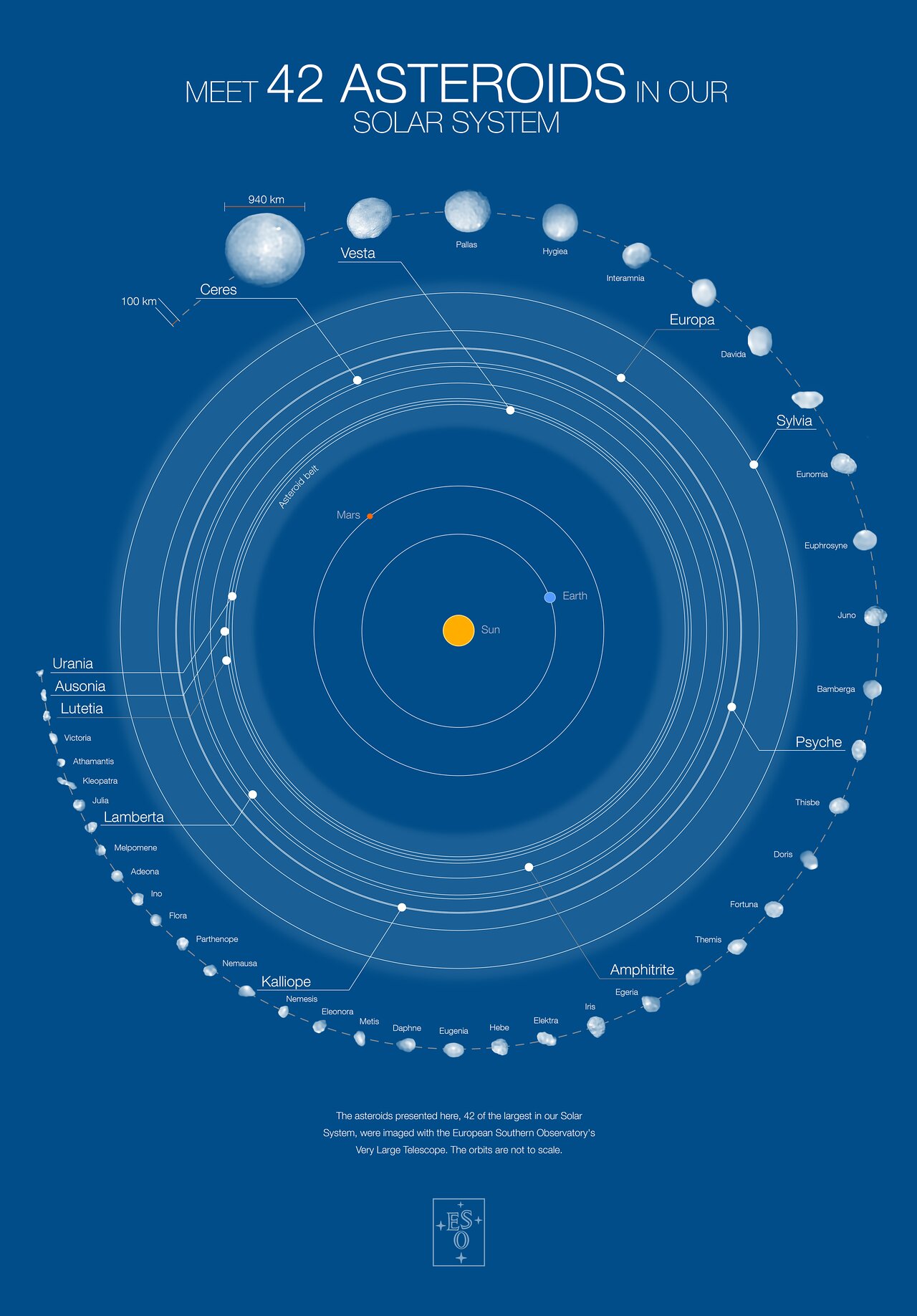ESO's VLT Images 42 Of The Largest Asteroids In Our Solar System
Our solar system is filled with asteroids of all shapes and sizes. Many of them live in the asteroid belt, but some have spent their lives in other areas. The European Southern Observatory (ESO) has shared an image of 42 of the largest asteroids in the solar system. The asteroids were all imaged using the Very Large Telescope (VLT) and represent the largest objects in the asteroid belt between Mars and Jupiter.
Observations of each of the asteroids marked the first time they have been imaged in such high-resolution. The images show the asteroids have widely varying shapes, with most being spherical in nature, but some representing different shapes. While it's nice to see images of various asteroids in the solar system, the real reason they are being observed is part of the efforts of astronomers to trace the origins of asteroids in the solar system.
Of all the asteroids in the asteroid belt, only three large main belt residents, including Ceres, Vesta, and Lutetia, have been imaged with a high level of detail by space missions, including Dawn and Rosetta. However, observations from the ESO provided sharp images of a significantly higher number of targets within the asteroid belt. The new observations to provide detail on the asteroids were conducted between 2017 and 2019.
Astronomers say that most of the 42 objects they imaged for the sample are larger than 100 kilometers in size. Notably, the team imaged almost all asteroids in the belt larger than 200 kilometers with data collected on 20 out of 23 asteroids in that 200 kilometers size range. The two largest are Ceres and Vesta, measuring about 940 kilometers and 520 kilometers in diameter respectively.
The two smallest asteroids imaged for this endeavor are Urania and Ausonia, each measuring about 90 kilometers in diameter. One of the most interesting shaped asteroids in the belt is Kleopatra, which has a dog-bone shape. Astronomers on the project noted a wide range of densities for the asteroids suggesting their composition varies significantly.

